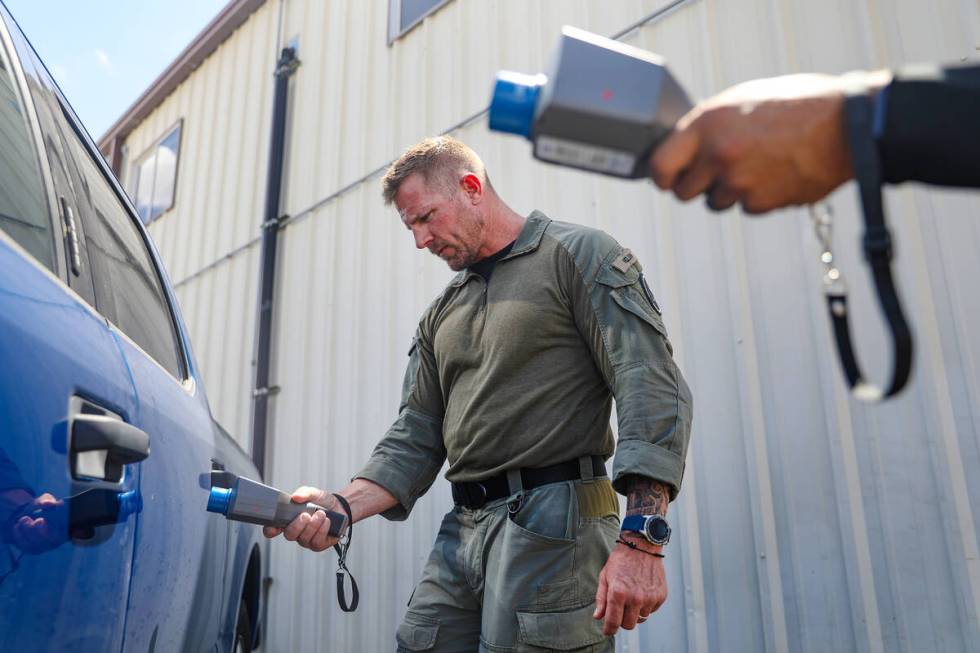Counterterrorism training preps police for nuclear attacks

Las Vegas Valley law enforcement were alerted to a report of radiological materials located in a warehouse at the North Las Vegas Airport.
Officers entered the warehouse with personal radiation detectors before using secondary screeners to identify the material’s specific isotope and assess the potential threat to the public.
While the task carried out this week was part of a federally funded four-day training exercise, authorities said the drill helps officers identify real danger.
”It is like DNA of an individual person,” said Bobby Baker, a principal training specialist with the Nevada National Security Site’s Counterterrorism Operations Support team that led the training exercise. “Every isotope has its own signature. We can identify that and confirm what it is.”
Training by the counterterrorism team offers police practice on how to respond to a terrorist attack involving radiation exposure devices, improvised nuclear devices, and dirty bombs, which combine traditional explosives with radioactive materials.
Organizers said the likelihood of such an attack in Southern Nevada is certainly minimal, but the training is necessary in case the improbable attack occurs.
“The vast majority of it teaches first responders skills to detect radiation and how to react to it properly,” said Robert Ryan, an operations manager for the counterterrorism team.
The Metropolitan Police Department’s All-Hazard Regional Multi-agency Operations and Response team, commonly known as ARMOR, participated in the training for four days.
The team, which also includes officers from North Las Vegas, Henderson and Nevada State Police, responds to public safety threats stemming from chemical, biological, radiological and nuclear materials as well as dangers from more traditional explosive devices in Southern Nevada.
Other training exercises presented scenarios involving radioactive materials in a vehicle or in a crowd.
“The training was great,” said Metro Sgt. David Milewski. “We have some new members on the team so it was beneficial for them and also served as a great review (for long-time armor team members.)”
Ryan said the training also helps police discern whether radiological material is part of a weapon or if there is a more innocent explanation for its presence. Soil moisture density gauges used in construction can sometimes give off radiation that might cause an alert for a radiation detection device.
“It is important to not only realize what is a threat, but it is equally important to realize what isn’t a threat so you don’t cause an undue panic or cause some sort of irrational response,” Ryan said.
First responders across the country receive similar training through funding from the Department of Homeland Security.
“The end goal is two-fold,” Ryan said. “We want to increase general awareness about radiation and the threat of radiation. The second is we want to provide a skill set to first responders so they know how to properly react to it and not put themselves or the public in danger.”
Contact Glenn Puit by email at gpuit@reviewjournal.com. Follow @GlennatRJ on Twitter.